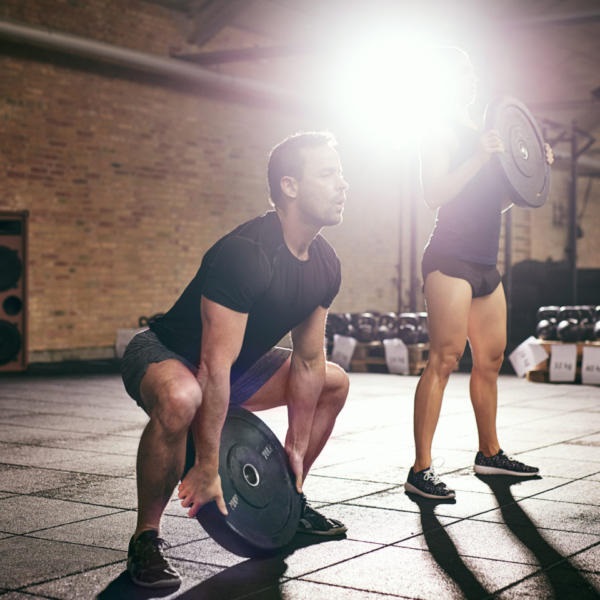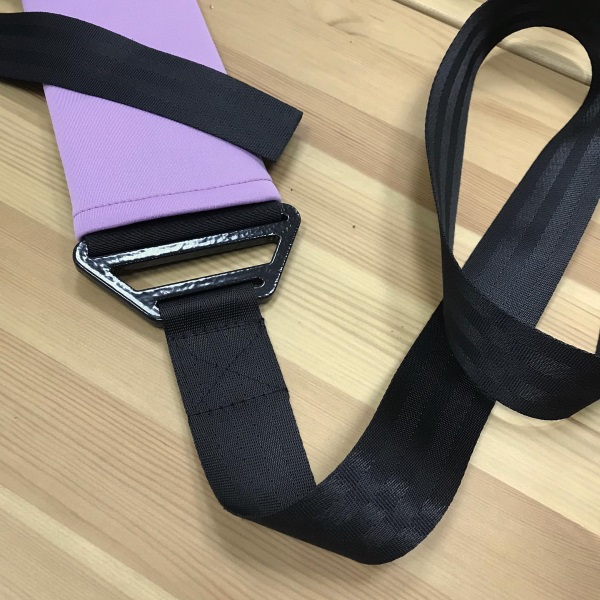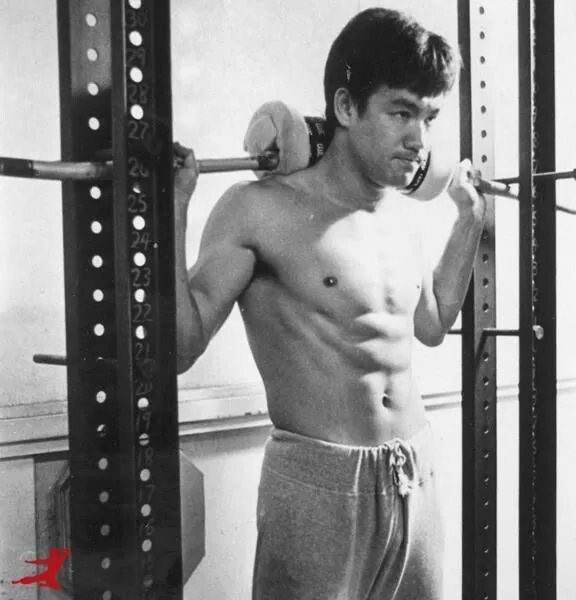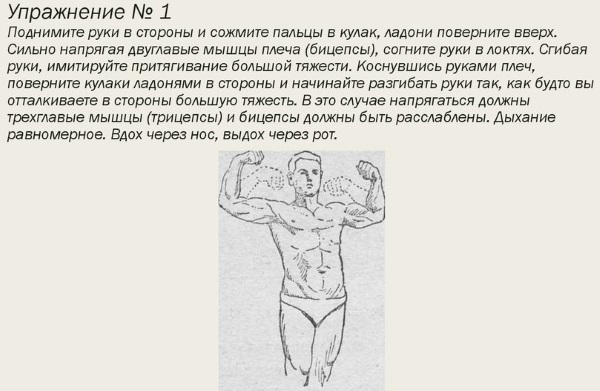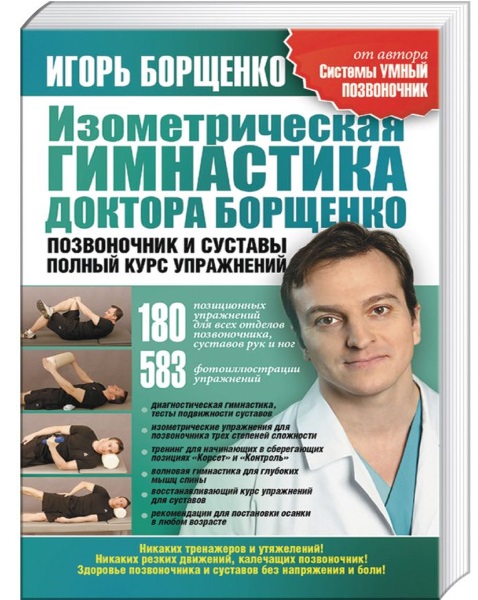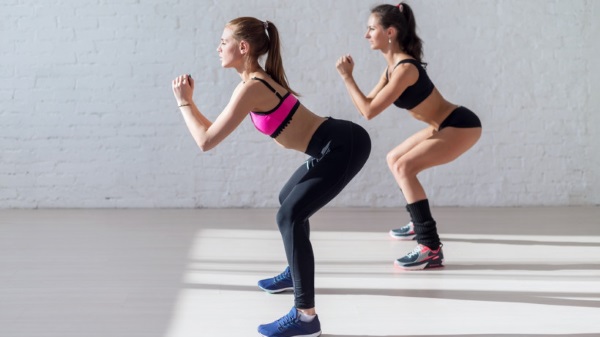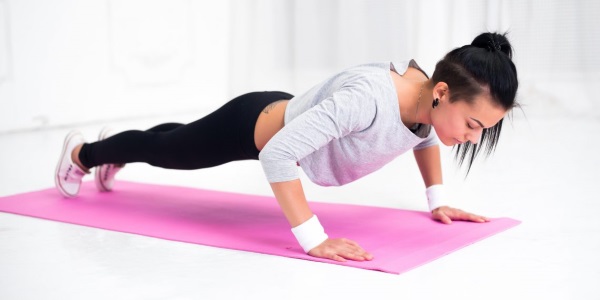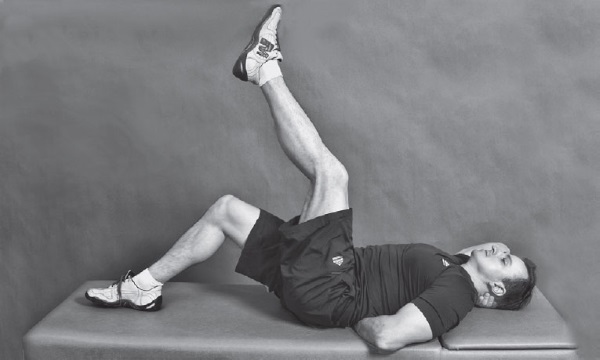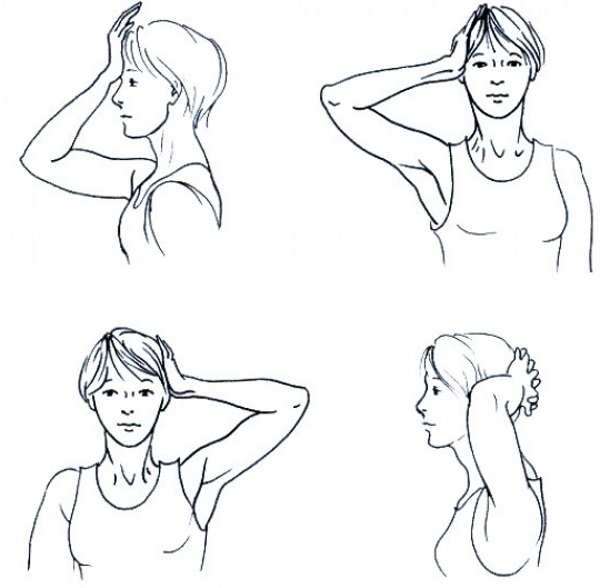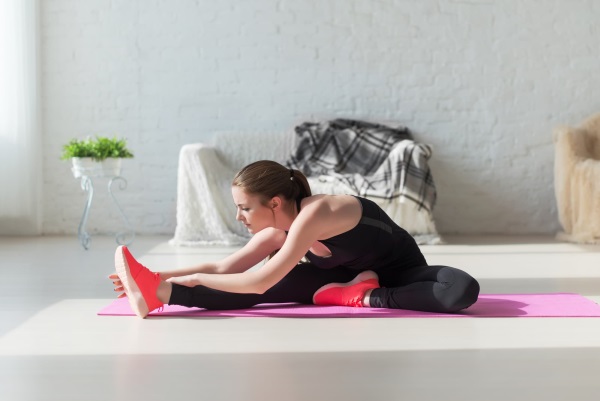Isometric exercises are based on isometrics. This is the name of the system of static exercises, the purpose of which is to develop strength and strengthen the articular apparatus.
What is isometric exercise
Isometric exercises are the foundation of strength training. The term "isometrics" lends itself to translation from Greek, which can be interpreted as "constant distance". In the process of isometric exercises, the physical efforts of the athlete are directed to strength tension, while the muscles do not change their length, and the joints do not change the angle of bend.
When performing the task, due to the fact that the muscles do not have the usual dynamic contraction, the main load falls on the tendons. The process leads to a gradual build-up of physical strength, as well as an increase in the body's ability to create increased efforts in a short period of time.
Different phrases are used to refer to isometric exercises:
- gymnastics Samson, Zass;
- tendon gymnastics;
- statics;
- static exercises;
- isometry.
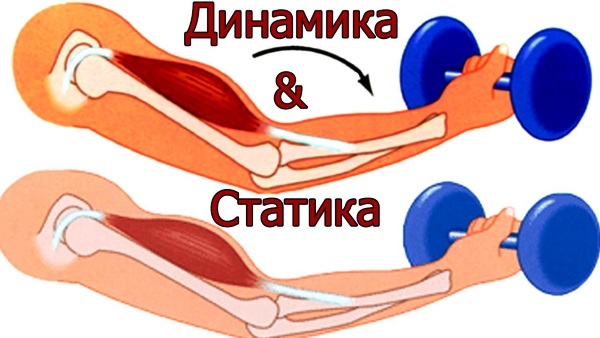
Isometric exercises differ from dynamic workouts:
| Isometrics | Dynamics |
| Develop maximum strength values | Contributes to the development of snatch opportunities |
| Strength development for static poses | Strength development in the range of motion |
| Strengthens tendons | Boosts muscle building |
There are several benefits of isometric exercise in terms of time spent. Experts characterize isometric training as a means of achieving goals in a short time.
Normal workouts take a long time, and rest is required between sets to recuperate. Isometry has the main advantage: the period of time devoted to statics fully engages the muscles throughout the entire period of working time.
In addition, the advantages of strength training isometric are highlighted:
- Availability... Special gyms are not chosen for conducting isometric exercises. A room is needed where there will be enough space for stretching the body, and basic items such as towels, belts or harnesses, and support are available.
- Ability to train daily... Long breaks are not required to recuperate after performing isometric exercises. Classes are held regularly, daily, several times a day.
- Ability to increase strength indicators in a short time with the right exercise approach.
Among the disadvantages of isometric exercises, there are several points:
- It is not recommended to start doing isometry on your own. At the initial stage, you need to be accompanied by a trainer.
- When doing the exercises, special attention is paid to correct breathing.
- To achieve maximum results, isometry is always accompanied by dynamics.
- Isometric exercises are not aimed at improving coordination skills.
- Prolonged isometric exercises contribute to muscle shortening.
Exercises are not performed if there are contraindications. Fixing isometric poses, training tendon muscles significantly increases blood pressure.
Therefore, isometry is contraindicated:
- with hypertension;
- with hypotension;
- the presence of diseases associated with a violation of the structure of the vessels of the brain, blood flow, heart problems.
How to do exercises correctly and safety
Strength training, built on the foundations of isometric, has specific features. When conducting classes, special attention is paid to safety precautions. Power loading on muscles and tendons, if the techniques are not performed correctly, can provoke painful injuries.
Before you start exercising, experts recommend that you study the basic safety rules:
- perform 10 to 20 exercises daily, no more;
- when fixing the posture, they do not hold the breath, the muscles are strained only on inhalation;
- when performing an exercise on certain muscles, they strain the whole body;
- certain types of exercises last no more than 6 seconds, between them take a minimum break of 30 seconds;
- the increase and decrease in the load on the muscles runs smoothly, without jerking;
- when headaches, sharp pains in joints and tendons appear, classes are stopped.
Necessary equipment
To perform isometric exercises, a support is required, which can be walls, chairs, window sills. Use straps, ropes, or towels to stretch.
Immediately before training, it is recommended to perform a set of exercises that help to stretch the muscles. This promotes warming up and sets up the muscles for further work.

 Don't miss the most popular column article: Body drying for girls. Training program, detailed nutritional menu for a month by day.
Don't miss the most popular column article: Body drying for girls. Training program, detailed nutritional menu for a month by day.Alexander Zass's technique
Alexander Zass was the founder of static exercise in the 20th century. on Russian territory. The complex, developed with its help, is based on yoga exercises, as well as the methods of Chinese martial art. Alexander Zass was called Samson or Iron Samson, he was awarded the title "The Strongest Man on Earth".
At the same time, his body weight was only 75 kg, but in the circus arena where he worked, he could lift 2 adult lions on a special yoke.
Zass attached great importance to isometric exercises in his own training, he believed that isometrics can save not only time, but also energy. The Alexander Zass technique is based on training with chains or belts. In this way, Samson increased his own capabilities, which he later demonstrated in the circus arena.
Bruce Lee Method
Sports experts believe that for his daily workouts, Bruce Lee took isometric exercises according to the method of Alexander Zass as a basis. In addition, he enjoyed the basic rules of bodybuilding. As a result, the Bruce Lee system was formed, it includes isometric exercises that are available even to inexperienced athletes.
Bruce Lee did one exercise from the list every day, supplementing it with other workouts according to his own method, while he believed that when performing static exercises, several basic rules must be followed.
For instance:
- he did his workouts in the early morning;
- thoroughly ventilate the room before training;
- after gymnastics, he considered it mandatory to take a contrast shower.
Crossbar exercises:
- Stand up straight, stretch your arms up shoulder-width apart.
- The crossbar is set a few cm below the outstretched arms, the crossbar is wrapped around.
- Then they press on it with a maximum force of about 6 - 10 seconds.
Toe Rise:
- The bar is set above the shoulders, then gently rises on the toes.
- In this case, the shoulders create pressure with a maximum effort on the crossbar for 6 - 12 seconds.
Squat:
- Set the bar at a level so that you can rest your shoulders on it in a squat position.
- Squat down and create pressure on the bar for 6 - 10 seconds.
Strong-willed gymnastics Anokhin
By the beginning of the XX century. became a popular system of physical exercises of the Russian athlete, Dr. No special equipment or room is required to complete these exercises. Anokhin's volitional gymnastics is often called room gymnastics.
When drawing up the methodology, the doctor was guided by the principle that it is impossible to come up with new movements for the body, you can only vary the principles of their execution. The absence of weights (dumbbells or weights) was not an obstacle to tense the corresponding muscles.
Anokhin formulated 8 principles for those who want to get acquainted with the methodology:
- all attention should be focused on the muscle or muscle group being trained;
- increasing the load, mastering a new exercise should be slow;
- when performing the exercise, it is necessary to monitor the sequence of breathing;
- the exercise must be performed in front of a mirror;
- after training, you need a contrast shower and a thorough rubbing of the body with a coarse towel.
In addition, Anokhin recommended adhering to a restrictive diet in nutrition. Food, in his opinion, should be varied, but simple.
Main exercise:
- Hands spread apart, clench a fist, palms turn up, straining biceps.
- Bend your arms at the elbows, while simulating the attraction of a large load.
- Then they begin to unbend their arms as if they want to push the load away.
- When the arms are bent, inhale, when unbending, exhale.
Additional thrust:
- Legs are set shoulder-width apart, raise your arms forward, clench your fist. At the same time, the muscles of the back are strained.
- They spread their arms, then begin to bring them together, as if squeezing a large box at the level of the chest.
- When spreading the hands, inhale, exhale when mixing.
Lying position:
- They lie on their backs, maintain complete immobility of the body, but at the same time quickly raise and lower their legs.
- The ascent angle should be 50.
Isometric gymnastics Borshchenko
Dr. Borshchenko created a special complex of isometric gymnastics, the purpose of which is to combat diseases of the back, characterized by dystrophy and muscle degeneration. The technique is used to treat the spine and musculoskeletal system. Borshchenko's techniques are focused on the spine of the lumbar region.
The advantage of the system is security and availability. Gymnastics is suitable for people with different backgrounds and ages. Gymnastics is effective as a preventive measure or a concomitant comprehensive measure in the treatment of back problems. Its purpose is to increase the endurance of the back muscles.
When performing gymnastics, Borshchenko is recommended adhere to the basic recommendations:
- the order in which the exercises are performed does not matter;
- stretching is required before classes;
- it is important to adhere to the system for correct exercise and increase efficiency, training should be regular.
Despite the fact that gymnastics is available to most people of varying degrees of physical fitness and of different ages, it is necessary to consult with your doctor before starting it.
Training complex for different parts of the body
Isometric exercises in different methods are created for special muscle groups. According to the observations of practitioners, founders of theories in strength training, it is important to observe the sequence of muscle tension or muscle groups.
For strengthening the buttocks and legs
A whole set of static exercises has been developed that helps to work out these muscle groups.It is recommended to conduct classes in sneakers that are slip resistant.
Rack with side exit. This effort helps to strengthen the muscles of the thighs and buttocks, as well as the inner thigh.
Features:
- A semi-squat on one leg is made from a classic rack.
- They take the second leg to the side, while pulling the sock towards themselves.
- The legs, taken in the lateral half-squat, remain static for 5-10 seconds, then return to their original position.
- Repeat the lunge with the other leg.
Tilt stand... With an effort they hold the pose for 5-10 seconds.
Features:
- From a classic stand with legs spaced across the width of the shoulders, they make a forward bend at a right angle to the floor surface.
- The arms should continue in a straight line of the body, that is, be extended forward.
- In this position, they freeze, straining the muscles, then return to their original position.
Squats. Static exercises with squats strengthen the muscles of the buttocks.
Features:
- From a classic rack, squat deeply until the thighs are completely parallel to the floor surface.
- In this case, the feet should be widely spaced, the heels should look at each other.
- The squat is carried out on toes with the heels as high as possible.
Supported on the wall. One of the most popular static exercises for strengthening all parts of the thigh and gluteus muscles.
Features:
- To perform, they lean against the wall, legs are spread shoulder-width apart parallel to each other.
- Then they begin to squat without looking up from the wall.
- Squat until they reach a right angle at the knees, freeze for 5 seconds, then slowly straighten. Hands in this position can be extended forward or slide along the wall.
To strengthen the press
The abdominals are usually strengthened from a prone position. In order to carry out the workout, a hard mat is used.
Features:
- They lie on their backs, their hands are lowered along the body.
- The legs are raised 10-20 cm from the floor surface, then they begin to bend and unbend them one by one, without touching the floor with the heels. In this case, breathing should be uniform, not knocked down.
- The exercise is performed with effort, straining the abdominal muscles.
The plank is one of the most popular exercises for targeting different muscle groups.
Features:
- From a position, leaning on your elbows or arms, the body is raised so that it is parallel to the floor surface.
- They remain in this position for 10-20 seconds.
Each time, the exercise time is increased. The shoulders should be located exactly above the level of the elbows, the legs should be straightened, in a state of tension.
After mastering the simplest way of performing the plank, they proceed to the execution of the plank with complication:
- raise one hand;
- lifts one leg;
- raise an arm and a leg at the same time;
- stretched out on the side.
For back
One of the common mistakes when doing muscle development exercises is the emphasis on pumping up the abdominal muscles and completely ignoring the muscles of the back.
Leg Raise:
- From a standing position, raise the leg at an angle of 90.
- Then rotate with one leg in one direction, with the other leg in the other direction.
Compliance with safety precautions, a carefully planned schedule of static training sessions will not only increase muscle mass or strength indicators, but also strengthen the body and improve body relief.
Changing hands:
- In a position, standing on all fours, with support on knees and outstretched arms, they put their hands behind the back alternately.
- The hand is held on the lower back for about 5 seconds, then returned to its original position.
For chest
The pectoral muscles are difficult to work out. Professional athletes often incorporate pectoral exercises into their daily routine.
Features:
- From the position of the classic stand, the arms are pulled forward, while straining the pectoral muscle as if a great weight were pressing on the chest.
- Maintain tension for 15 seconds, then relax the muscles.
- The exercise is repeated several times. Interior items are suitable for performing static exercises.
- In a sitting position at the table, they take the opposite edges of the table.
- Lean forward in an attempt to bring their hands together.

 Don't miss the most popular column article: Glutamic acid - what it is, why and how it is used in sports, bodybuilding.
Don't miss the most popular column article: Glutamic acid - what it is, why and how it is used in sports, bodybuilding.For neck muscles
The cervical region is important for the spine.
Neck strengthening workouts help to strengthen the subsequent spine:
- They sit down on a chair.
- They put a book on their head, then shake it back and forth a little.
It is important to maintain a balance, to ensure that the book does not fall. This exercise trains the muscles of the cervical spine and increases their endurance.
Features:
- The palm is placed on the back of the head, then tilts the head back to look up.
- At the same time, they exert strong resistance with the palm, hold the tension for 10-15 seconds.
Such exercises can be modified depending on preferences:
- Place the palm on the forehead, tilt the head down.
- Resist with the palm, hold for no more than 10 seconds.
Exercise with a belt by Alexander Zass
Initially, Alexander Zass's exercises were performed using a chain. But over time, the author, as well as his followers, changed chains for belts.
Sequence:
- Hands are extended over the head, they hold a chain. For a few seconds, they make an effort to stretch the chain with their hands in different directions, while loading the broad back muscles, chest muscles, and the main triceps.
- The chain is thrown behind the back, squeezed in open fists. Hands are stretched in different directions. The main tension falls on the pectoral muscles.
- One end of the chain is fixed on the foot, the other end is squeezed in the palm of your hand. The tension is concentrated in the biceps of the shoulder and the broadest muscles of the back, with effort it is necessary to break the chain.
How to build an isometric workout
Isometric exercises are built in accordance with basic rules and compliance with safety regulations.
Attention is paid not only to the choice of training session, but also to the accompanying factors:
- The workout is done in the morning when the muscles begin to wake up after a night's rest.
- Stretching is done before starting static exercises. Consistently stretch the muscles of the back, legs, arms.
- For the exercises, a muscle group is chosen to work out.
- When fixing poses, the maximum and minimum duration of the exercise is taken into account.
- Take a break between exercises.
After a workout, a contrast shower becomes a good relaxation for the muscles. After training, it is recommended to follow a diet, replenish the fluid balance in the body.
People with varying degrees of fitness can use isometric exercises. For bodybuilders, static muscle tension poses are a way to increase strength. For non-professional athletes, isometrics can be a way to strengthen different muscle groups and improve body definition.
Article design:Lozinsky Oleg
Isometric exercise videos
A set of isometric (tendon) exercises:

